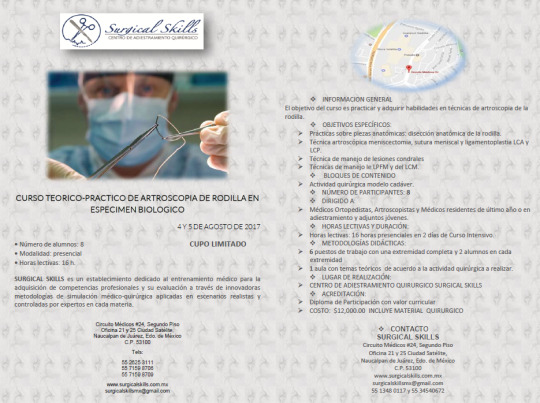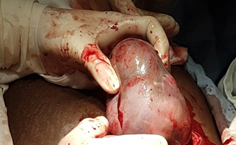Angled BIO-RSA (bony-increased offset-reverse shoulder arthroplasty): a solution for the management glenoid bone loss and erosion
Fuente:
Este artículo es originalmente publicado en:
De:
Walch G5.
J Shoulder Elbow Surg. 2017 Jul 20. pii: S1058-2746(17)30310-5. doi: 10.1016/j.jse.2017.05.024. [Epub ahead of print]
Todos los derechos reservados para:
Copyright © 2017 The Authors. Published by Elsevier Inc. All rights reserved.
Abstract
BACKGROUND:
Glenoid deficiency and erosion (excessive retroversion/inclination) must be corrected in reverse shoulder arthroplasty (RSA) to avoid prosthetic notching or instability and to maximize function, range of motion, and prosthesis longevity. This study reports the results of RSA with an angled, autologous glenoid graft harvested from the humerus (angled BIO-RSA).
CONCLUSION:
Angled BIO-RSA predictably corrects glenoid deficiency, including severe (>25°) multiplanar deformity. Graft incorporation is predictable. Advantages of using an autograftharvested in situ include bone stock augmentation, lateralization, low donor-site morbidity, low relative cost, and flexibility needed to simultaneously correct posterior and superior glenoid defects.
Copyright © 2017 The Authors. Published by Elsevier Inc. All rights reserved.
KEYWORDS:
Glenoid bone loss; bony lateralization; bony-increased offset reverse shoulder arthroplasty (BIO-RSA); glenoid erosion; glenoid inclination; glenoid retroversion; reverse total shoulder arthroplasty
Resumen
ANTECEDENTES:
La deficiencia glenoidea y la erosión (retroversión / inclinación excesiva) deben ser corregidas en la artroplastia reversa del hombro (RSA) para evitar la muesca protésica o inestabilidad y para maximizar la función, el rango de movimiento y la longevidad de la prótesis. Este estudio reporta los resultados de RSA con angulación con un injerto glenoideo, autólogo, recolectado del húmero (angulado BIO-RSA).
CONCLUSIÓN:
La BIO-RSA angulada corrige de forma predecible la deficiencia glenoide, incluyendo una deformidad multiplanar severa (> 25 °). La incorporación del injerto es predecible. Las ventajas de usar un autoinjerto in situ incluyen aumento de la masa ósea, lateralización, baja morbilidad del donante, bajo costo relativo y flexibilidad necesaria para corregir simultáneamente los defectos glenoides posteriores y superiores.
La BIO-RSA angulada corrige de forma predecible la deficiencia glenoide, incluyendo una deformidad multiplanar severa (> 25 °). La incorporación del injerto es predecible. Las ventajas de usar un autoinjerto in situ incluyen aumento de la masa ósea, lateralización, baja morbilidad del donante, bajo costo relativo y flexibilidad necesaria para corregir simultáneamente los defectos glenoides posteriores y superiores.
Copyright © 2017 Los Autores. Publicado por Elsevier Inc. Todos los derechos reservados.
PALABRAS CLAVE:
Pérdida ósea glenoidea; Lateralización ósea; incremento óseo-artroplastia reversa de hombro compensada(BIO-RSA); Erosión glenoide; Inclinación glenoide; Retroceso glenoideo; Artroplastia total del hombro reversa
Pérdida ósea glenoidea; Lateralización ósea; incremento óseo-artroplastia reversa de hombro compensada(BIO-RSA); Erosión glenoide; Inclinación glenoide; Retroceso glenoideo; Artroplastia total del hombro reversa
PMID: 28735842 DOI:







